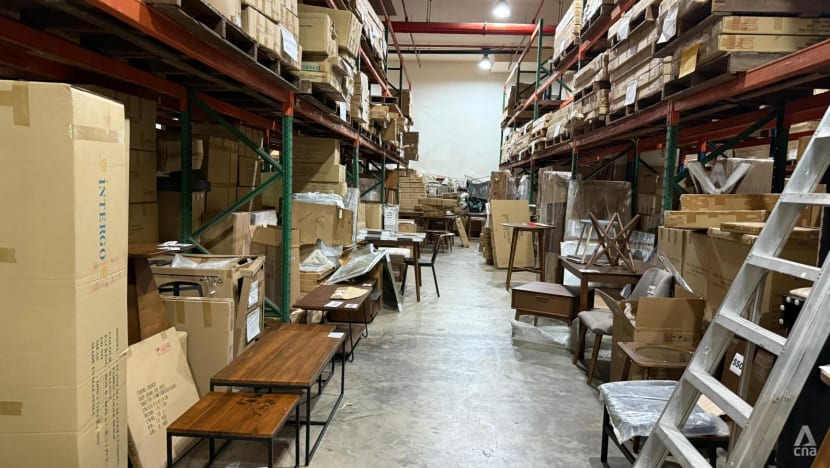Singapore Faces Record Surge in Business Liquidations in 2025
Singapore is grappling with a wave of business failures in 2025, as the number of companies forced into liquidation has soared to levels not seen in at least five years. According to the Ministry of Law, 187 firms were compelled by the courts to wind up between January and June 2025—up sharply from 146 in the same period last year and just 95 the year before. This follows a record 307 compulsory liquidations in 2024, the highest since 2010. The trend highlights deepening economic pressures and shifting business realities in the city-state, with implications for workers, creditors, and the broader economy.
- Singapore Faces Record Surge in Business Liquidations in 2025
- What Is Driving the Surge in Liquidations?
- Sector Spotlights: F&B and Beyond
- Case Studies: Liquidation in Action
- The Human and Economic Impact
- Why Are SMEs Especially Vulnerable?
- Are There Any Signs of Optimism?
- Legal and Regulatory Developments
- Public and Industry Reactions
- Looking Ahead: Risks and Opportunities
- In Summary
What Is Driving the Surge in Liquidations?
The spike in business closures is the result of a perfect storm of economic challenges. Rising interest rates from 2022 to 2024, the withdrawal of COVID-19 government support in 2023, and a sluggish economic recovery have all contributed to mounting financial stress for Singaporean companies. Many businesses, especially small and medium-sized enterprises (SMEs), are struggling to manage cash flow and service their debts, even if they have assets on paper.
Compulsory liquidation—a legal process where a company is forced to wind up, usually at the request of creditors—has become increasingly common. The process involves selling off a company’s assets to repay outstanding liabilities, often recovering only a fraction of what is owed. In some cases, creditors recover as little as 10 percent of their claims, with unsold assets sometimes disposed of at steep discounts or simply junked.
High operating costs, especially rent, have been a persistent problem. The food and beverage (F&B) sector has been particularly hard hit, followed by interior design, construction, and other service industries. Debt collectors and asset recovery firms report a significant rise in cases, with some companies owing millions of dollars and debts per case rising from S$20,000–S$60,000 last year to over S$100,000 in 2025.
Sector Spotlights: F&B and Beyond
The F&B sector’s woes are emblematic of the broader challenges facing Singapore’s business community. In 2024, a record 3,047 F&B establishments closed—more than any year in the past 15 years. The trend continued in the first half of 2025, with 1,404 closures. While new establishments are still opening (1,964 so far in 2025), the churn rate underscores the volatility and risk in the sector.
A high-profile casualty was Proof & Company Spirits, a leading distributor in Singapore’s craft spirits scene. After 13 years in business, the company entered provisional liquidation in July 2025, citing the closure of key restaurant and bar clients and a dramatically changed market environment. The closure left 16 employees jobless and sent ripples through the local drinks industry. As industry consultant William Leonard put it,
This isn’t just another distributor shutting shop—it’s the end of an era for Singapore’s craft spirits scene. For those outside our inner circle, Proof wasn’t just moving bottles. They were building culture.
Other sectors have not been spared. The construction and interior design industries, already grappling with manpower shortages and rising material costs, have also seen a spike in liquidations. In some cases, companies tried to borrow more to stay afloat, but mounting debts and weak demand made survival impossible.
Case Studies: Liquidation in Action
CCIC Singapore: Sanctions and Sudden Collapse
Not all liquidations are caused by local economic factors. In June 2025, CCIC Singapore—a subsidiary of China Certification and Inspection Group—was forced into liquidation after US sanctions froze its bank accounts. The sanctions, imposed for allegedly helping obscure the origins of Iranian oil exports to China, led to a sudden cash flow crisis, loss of clients, and the retrenchment of over 300 employees. The company, which counted global energy giants among its clients, was unable to pay salaries or operational costs. Retrenchment benefits for staff were delayed until the conclusion of the liquidation process, highlighting the human cost of such abrupt closures.
Legal Battles and High-Profile Scams
Some liquidation cases are entangled in legal disputes and allegations of fraud. In one of Singapore’s largest Ponzi schemes, liquidators for companies linked to alleged nickel-trading fraudster Ng Yu Zhi won a court ruling to recover over $900 million from former directors and employees. The court found that the companies were insolvent and had no legitimate business, with investor funds misused for personal gain. The case underscores the complexity and scale of some insolvency proceedings in Singapore.
Meanwhile, Singapore’s High Court has clarified the responsibilities of liquidators in adjudicating creditor claims. In a recent case involving Park Hotel Group Management and Ascendas Hospitality REIT, the court emphasized that liquidators must provide clear explanations for their decisions and ensure that only genuine debts are paid out from company assets. The ruling reinforces judicial oversight of the liquidation process and the need for transparency and fairness.
The Human and Economic Impact
The surge in liquidations has far-reaching consequences for employees, landlords, suppliers, and the wider economy. Workers face sudden job losses and uncertainty over unpaid salaries and retrenchment benefits. Landlords and suppliers often wait in vain for overdue payments, sometimes delaying action in the hope that struggling companies will recover. Debt collectors report a 20–30 percent increase in cases each month, with some clients returning repeatedly for help.
For creditors, liquidation is rarely a satisfactory outcome. The process is slow, and the recovery rate is low. Assets are often sold at fire-sale prices, and the proceeds are divided among creditors according to legal priorities. In many cases, unsecured creditors—such as suppliers and employees—recover only a small fraction of what they are owed.
The broader economic impact is also significant. Singapore’s economy is highly exposed to global trade and vulnerable to external shocks. The Ministry of Trade and Industry has downgraded the country’s GDP growth forecast for 2025 to 0–2 percent, down from 4.4 percent in 2024. Rising protectionism, US tariffs, and geopolitical tensions add to the uncertainty, especially for sectors like retail and F&B that depend on consumer confidence and international visitors.
Why Are SMEs Especially Vulnerable?
Small and medium-sized enterprises (SMEs) make up the backbone of Singapore’s economy but are particularly at risk during periods of economic stress. SMEs often have limited access to financing and smaller cash reserves, making them less able to weather prolonged downturns or sudden shocks. The end of pandemic-era support measures in 2023 removed a crucial safety net, leaving many SMEs exposed to rising costs and weak demand.
Debt recovery firms note that the amounts owed by SMEs have risen sharply, with some businesses accruing debts of over S$100,000 before closing. Many SMEs tried to borrow from external sources to stay afloat, but with interest rates high and lenders cautious, few succeeded. When liquidation becomes the only option, the process is often painful and protracted, with little left for creditors or employees at the end.
Are There Any Signs of Optimism?
Despite the grim headlines, there are glimmers of hope. The number of new business registrations in Singapore has continued to rise, with more companies formed in the first half of 2025 than in the same period last year. This suggests that, while some sectors are contracting, others see opportunities in a changing market. Entrepreneurs and investors remain attracted to Singapore’s stable legal system, skilled workforce, and strategic location.
Experts caution, however, that the business environment remains challenging. High rental costs, demand uncertainty, and manpower shortages are likely to persist. Business owners, especially in sectors prone to high operational costs or global demand shocks, need to plan for long-term risks and build resilience into their operations.
Legal and Regulatory Developments
The surge in liquidations has prompted closer scrutiny of Singapore’s insolvency and restructuring framework. Recent court cases have clarified the duties of liquidators and the rights of creditors, reinforcing the importance of transparency and accountability. In cross-border cases, such as the ongoing efforts to recover funds from the 1MDB scandal, Singapore’s courts and regulators have played a key role in supporting international investigations and asset recovery.
In 2025, liquidators for companies linked to Malaysia’s 1MDB scandal filed a $2.7 billion lawsuit against Standard Chartered Bank in Singapore, alleging the bank enabled fraudulent transfers. The case highlights the global reach and complexity of some liquidation proceedings, as well as the reputational risks for financial institutions involved.
Public and Industry Reactions
The wave of business closures has sparked debate and concern among Singaporeans. On social media platforms like Reddit, some users link the surge in liquidations to broader economic and political issues, expressing frustration over job insecurity, inflation, and the perceived lack of support for local businesses. Others see the crisis as a catalyst for change, arguing that more people will demand reforms as the impact is felt more widely.
Within affected industries, the mood is somber but resilient. Members of the drinks and hospitality trade, for example, have rallied to support colleagues affected by closures, sharing messages of solidarity and reflection. As former Proof & Company general manager Brandon Grusd observed,
The industry is under pressure and what’s happened here isn’t isolated. The drinks and hospitality world is going through a tough time, and now more than ever, we need to look out for one another.
Looking Ahead: Risks and Opportunities
Singapore’s business landscape is at a crossroads. The surge in liquidations is a stark reminder of the risks facing companies in a rapidly changing global economy. High costs, weak demand, and external shocks will continue to test the resilience of businesses, especially SMEs. At the same time, the city-state’s strong legal and regulatory framework, coupled with its reputation as a business hub, provides a foundation for recovery and renewal.
For business owners, the lessons are clear: build financial buffers, monitor cash flow closely, and be prepared to adapt to changing market conditions. For policymakers, the challenge is to support innovation and entrepreneurship while ensuring that vulnerable sectors and workers are not left behind. As Singapore navigates these turbulent times, the ability to learn from failures and seize new opportunities will be key to its continued success.
In Summary
- Singapore saw a record surge in business liquidations in the first half of 2025, with 187 companies forced to wind up by court order.
- Key drivers include rising interest rates, the end of COVID-19 support, high operating costs, and a weak economic outlook.
- The F&B sector has been hardest hit, but construction, interior design, and other industries are also affected.
- High-profile cases like Proof & Company Spirits and CCIC Singapore illustrate the diverse causes of liquidation, from market downturns to international sanctions.
- Liquidation often recovers only a fraction of what is owed, with significant impacts on employees, creditors, and landlords.
- Legal developments in Singapore are reinforcing transparency and fairness in the liquidation process.
- Despite the challenges, new business registrations are rising, suggesting ongoing entrepreneurial activity.
- SMEs remain especially vulnerable due to limited financing and cash flow constraints.
- Public and industry reactions reflect concern but also resilience and calls for reform.
- Singapore’s ability to adapt and innovate will be crucial as it faces continued economic headwinds.




